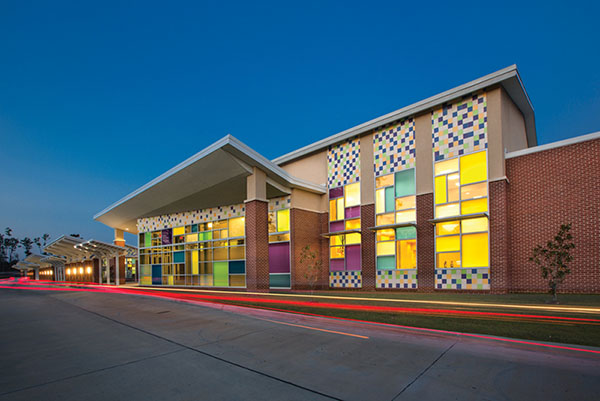School Safety and Security is Another Way Glass Can Save the World
NGA Helps Make School Security Products Accessible

Security glazing for schools is one example of how Glass Can Save the World, the National Glass Association (NGA) theme for the United Nations 2022 International Year of Glass (IYOG). NGA member companies formed a task group to consider how to make security glazing products more accessible and easier for schools to implement, and to advocate for mandatory security glazing in school buildings. The NGA Glass Conference: Chicago, July 18 – 20, will include a presentation on the latest developments in school building security and how the industry can continue to advocate for security glazing in schools.
The time is now for implementing strong security measures in schools. Tragically, we’ve already witnessed 27 active shooter events in United States schools this year. Last week, President Biden signed a new gun bill into law, including extended timeframes for mental health background checks of potential gun buyers under age 21 and funding for mental health programs in schools.
Glass is also a part of the school security equation. Security glazing products can make schools safer by deterring and slowing forced entry during active shooter events. Security glazing products are:
- Invisible like regular windows, not requiring metal bars or grates, which can feel institutional.
- Passive protectors, functioning without intervention, at all hours, even during electrical blackouts.
- Clear, bringing daylight into the building and allowing school administrators to visually monitor those approaching the building.
The NGA school security task group reviewed all available security test methods, and identified a gap in repeatable, industry consensus-based fenestration test methods for forced entry. They drafted a new test method specifically for active shooter scenarios to fill that gap. Standard Test Method for Forced-Entry-Resistance of Fenestration Systems after Simulated Active Shooter Attack is currently in the final ballot stages at ASTM. The test uses mechanically driven impact with projectiles to simulate an active shooter weakening the system and rates fenestration products on forced-entry resistance. The test gives a range of performance options with clear pass/fail criteria.
The next step in making schools safer may be to mandate the use of tested, certified security fenestration systems in school buildings. Building codes require tested, certified safety glazing and fire-rated glazing, and these requirements have dramatically reduced the number of injuries and deaths from accidental impact with glass and in building fires. Given the increasing number of active shooter events, building code requirements for certified security glazing in vulnerable areas of school buildings could dramatically reduce the number of injuries and deaths from active shooter events in schools.
Glass Can Save the World. A bold statement, and one that members of the glass and glazing industry are actively working to prove true. Join the conversation and get involved in the path to change during NGA Glass Conference: Chicago, July 18 – 20. To take immediate action, download and share the free NGA Advocacy One-Pager School Security: Windows Respond First with your local legislators.
Additional Building Security Resources
- The International Code Council (ICC) formed the Ad Hoc Building Safety and Security Committee in 2018 to consider high occupancy and high-risk buildings, including educational buildings. This committee is expected to recommend legislation requiring safety assessments for new high-risk buildings to hinder targeted violent events, while safeguarding occupants by facilitating rapid emergency first-responses.
- For existing school buildings, The Federal Emergency Management Agency (FEMA) publication Primer to Design Safe School Projects in Case of Terrorist Attacks and School Shootings provides a checklist to assess the assets, potential threats and hazards, and the level of vulnerability.


